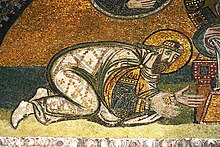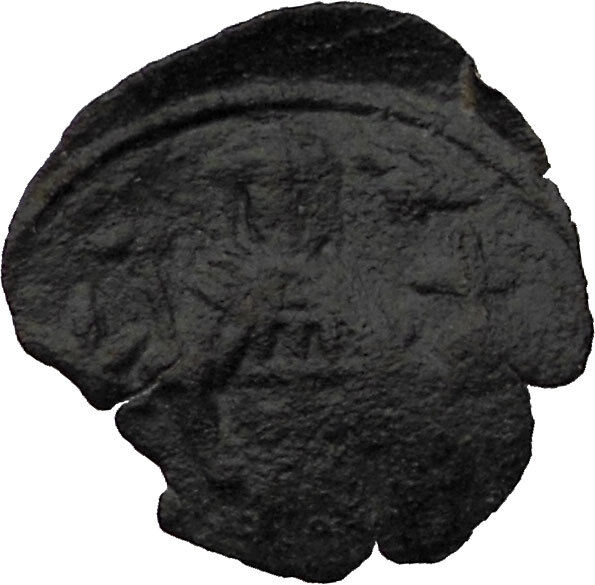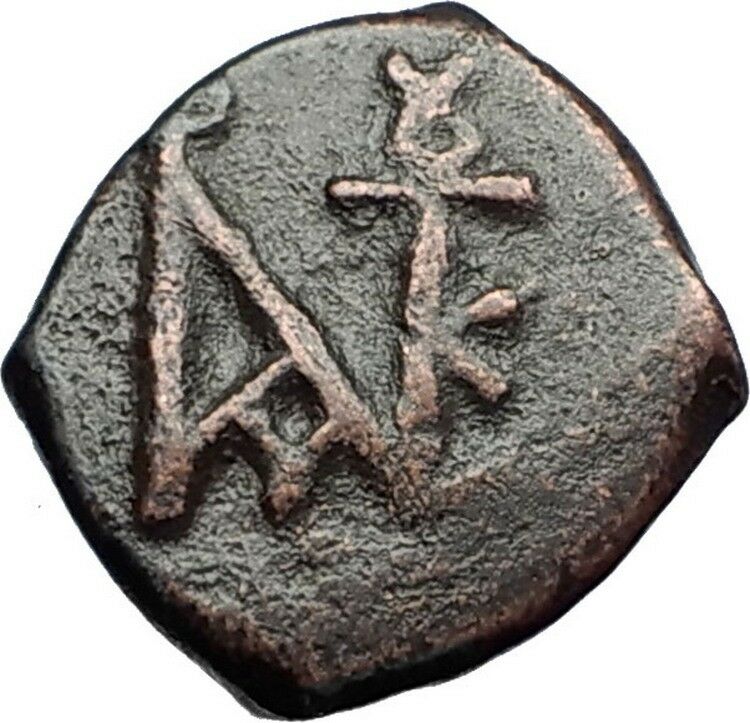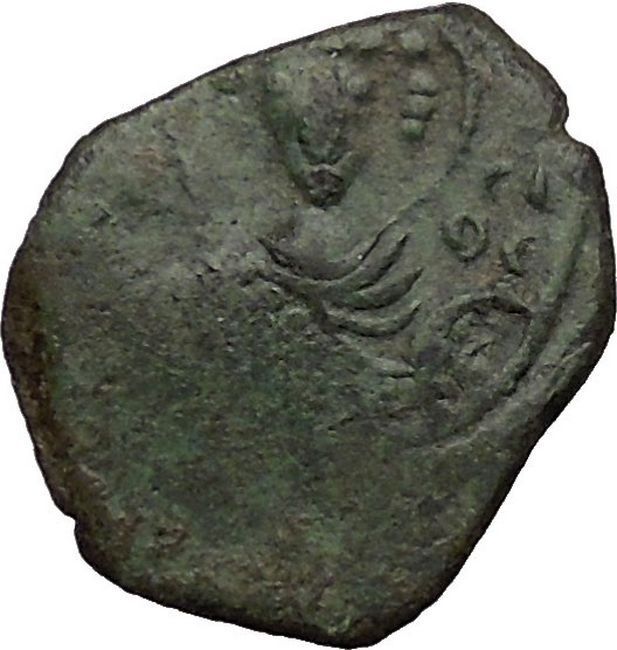|
Byzantine Empire
Leo VI, the Wise – Emperor: August 28, 886 – May 11th 912 A.D.
with Alexander, co-emperor
Bronze Follis 24mm (7.26 grams) Constantinople mint: 886-912 A.D.
Reference: Sear 1730
+ LЄOn S ALЄXAnGROS – Leo (on left) and Alexander (on right) seated facing on double throne, each wearing crown and loros, and holding between them labarum.
+ LЄOn / S ALЄXAn / GROS bASIL’ / ROMЄOn in four lines.
You are bidding on the exact item pictured, provided with a Certificate of Authenticity and Lifetime Guarantee of Authenticity.
Leo VI, surnamed the Wise or the Philosopher ( Leōn VI ho Sophos, 19 September 866 – 11 May 912), was Byzantine emperor from 886 to 912. The second ruler of the Macedonian dynasty (although his parentage is unclear), he was very well-read, leading to his surname. During his reign, the renaissance of letters begun by his predecessor Basil I continued, but the Empire also saw several military defeats in the Balkans against Bulgaria and against the Arabs in Sicily and the Aegean.

A mosaic in Hagia Sophia showing Leo VI paying homage to Christ
Leo was born to Eudokia Ingerina who was at the time mistress of Emperor Michael III and wife of his Caesar Basil. Which of the two men was his biological father is uncertain. Basil legally acknowledged Leo as his son but his later treatment of him might suggest that he regarded Leo as Michael’s son.
In 867, Michael was assassinated by Basil who succeeded him as Emperor Basil I. As the second eldest son of the Emperor, Leo was associated on the throne in 870 and became the direct heir on the death of his older half-brother Constantine in 879. However, he and his father hated each other and Basil almost had Leo blinded as a teenager. On August 29, 886, Basil died in a hunting accident, though he claimed on his deathbed that there was an assassination attempt in which Leo was possibly involved.
One of the first actions of Leo VI after his succession was the reburial of Michael III in Constantinople, which may have contributed to the suspicion that he was Michael’s son. Seeking political reconciliation, the new emperor secured the support of the officials in the capital, and surrounded himself with bureaucrats like Stylianos Zaoutzes and the eunuch Samonas. His attempts to control the great aristocratic families (e.g., the Phokadai and the Doukai) occasionally led to serious conflicts. Leo also attempted to control the church through his appointments to the patriarchate. He dismissed the Patriarch Photios of Constantinople, who had been his tutor, and replaced him with his own 19-year old brother Stephen in December 886. On Stephen’s death in 893, Leo replaced him with Zaoutzes’ nominee, Antony II Kaleuas, who died in 901. Leo then promoted his own imperial secretary (mystikos) Nicholas, but replaced him with his spiritual father Euthymios in 907.
The magnificent Church of Ayios Lazaros in Larnaca was built during Leo VI rule in the late 9th century. The church is one of the best examples of Byzantine architecture. Leo also completed work on the Basilica, the Greek translation and update of the law code issued by Justinian I, which had been started during the reign of Basil.
Bishop Liutprand of Cremona gives an account similar to those related about caliph Harun al-Rashid, stating that Leo would sometimes disguise himself and look for injustice or corruption. On one account, he was even captured by the city guards during one of his investigations. He wanted to know if the city patrol was doing its job appropriately. Late in the evening, he was walking alone and disguised. Though he bribed two patrols for 12 nomismata, and moved on, the third city patrol arrested him. When a terrified guardian recognized the jailed ruler in the morning, the arresting officer was rewarded for doing his duty, while the other patrols were dismissed and punished severely.
Leo VI was not as successful in battle as Basil had been. In indulging his chief counselor Stylianos Zaoutzes, Leo provoked a war with Simeon I of Bulgaria in 894, but was defeated. Bribing the Magyars to attack the Bulgarians from the north, Leo scored an indirect success in 895. However, deprived of his new allies, he lost the major Battle of Boulgarophygon in 896 and had to make the required commercial concessions and to pay annual tribute.
The Emirate of Sicily took Taormina, the last Byzantine outpost on the island of Sicily, in 902. In 904 the renegade Leo of Tripolis sacked Thessalonica with his Muslim pirates (an event described in The Capture of Thessalonica by John Kaminiates). In 907 Constantinople was attacked by the Kievan Rus’ under Oleg of Novgorod, who was seeking favourable trading rights with the empire. Leo paid them off, but they attacked again in 911, and a trade treaty was finally signed.
|











